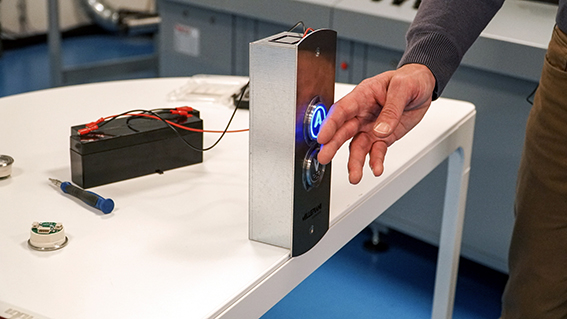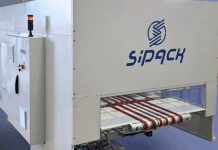OMET’s technology makes its way into the field of printed electronics with a revolutionary and extremely relevant product. Ribes Tech, start-up launched by OMET with the “Center for Nano Science and Technology” of the Italian Institute of Technology, has developed a photovoltaic system for the mechanical buttons of the lifts, making them “intelligent” and able to turn on contactless. The technology, born in the midst of the Covid emergency with the aim of helping in limiting the spread of pathogens, has already been tested in some elevators and will be available from early 2021.

The system, called DAPHNE PV, is based on the use of photovoltaic materials printed on flexible films, allowing to transform any mechanical button into “touchless” ones, working without physical contact. This technology has already been tested in real contexts and installed in an elevator at the Milan Stock Exchange.
Due to the current health emergency, it is essential to reduce the chances of contagion by improving the safety and hygiene of shared spaces. DAPHNE is designed to reduce the pathogens transmission through potentially contaminated surfaces and can be applied to an entire lift control panel at a cost of around 100 euros, without the need for significant technical interventions.
The DAPHNE PV technology uses special inks and a traditional rotary printer to make thin photovoltaic films adaptable to any shape. This could reduce the risk of contagion, because push-button panels are potentially contaminated surfaces.
These films, integrated with a specific electronic board, can be installed on mechanical buttons, such as those of an elevator, making them more “intelligent” and able to turn on contactless, for example with a gesture of the hand. The activation gesture can be simple, such as approaching a hand for at least a second, or articulated, depending on specific needs.
The shadow of the hand is “read” by the photovoltaic film, which detects a change in light, and communicated to a recognition system that determines whether the activation of the button is valid or not. The smart button will provide the electrical activation signal both if pressed or if the correct gesture is detected.
The strengths of this technology are low cost and ease of installation: the photovoltaic film and the electronic board can be just added to existing systems, by maintaining the mechanical functionality of the buttons. Following the installation of DAPHNE, no further certification is required.
Ribes Tech comes from a collaboration that began five years ago between OMET and the Italian Institute of Technology in Milan. The project is aimed at combining OMET’s technological skills in printing with the world of nanotechnologies in order to create electronic devices through the printing deposition of special inks. In particular, Ribes Tech is developing flexible photovoltaic modules for home automation, smart cities and the Internet of Things.






















